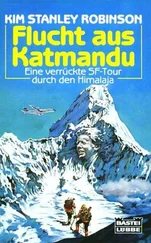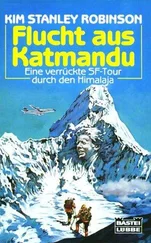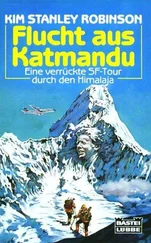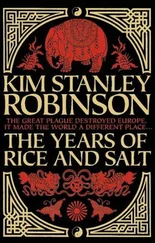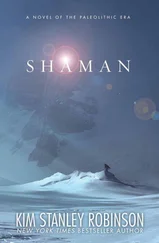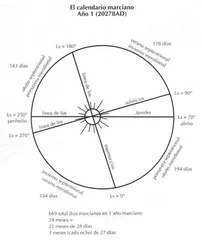Inside it much resembled other beach cottages, or so the swimmer said. Cut plank floors had been set flat in each chamber, with plank staircases leading through holes cut from one chamber to the next. In each chamber driftwood furniture was covered with padded cloth made of fine seaweed hair, on which simple striped patterns had been printed with shell dyes. There were knickknacks from the sea on the curved walls, and in an upper chamber a small bed was tucked under a window, across from a brick fireplace cut into the central wall. Each chamber had a window cut in its outer wall, the trapezoids filled with a clear fibrous material in the lower chambers where the windows were big, with mosaics of colored driftglass upstairs where the windows were small.
The swimmer observed it all with a delighted, little girl’s smile, unlike any Thel had seen on her face. “It’s just like my aunt and uncle’s,” she kept saying. “I used to love visiting them.”
So they spent the night dry and warm, cuddled together in a narrow bed, and in the morning the shell people were out working the beach or the ravines or the meadows up above the bluffs. Their next-door neighbor said to them, “If you will collect puka shells for us, you can stay in that house for as long as you care to. It hasn’t been used in ages.”
Collecting puka shells, they found, was a simple business, so simple that the shell people found it tedious; all of them but the children had more interesting or important things to do. Nevertheless they loved having the jewelry made from these shells. On the steep strand of the bay a vicious shorebreak sluiced the coarse blond sand back and forth, and as it did it ground up all the shells and coral bits and rocks that had found their way there, turning them into more of the coarse sand. Their next-door neighbor showed the two travelers that among the shell fragments being washed up and down were many specimens of a small fat cone-shaped shell, all of which were being worn down until only the thick caps at the base of the cone remained, round and usually holed in the middle, at the centerpoint of the shell’s whorl where it had been quite thin to begin with, So at a certain point in their disintegration these round flat holed pieces made perfect necklace beads, ready to be strung and worn; and a tiny percentage of them were a rich, deep blue, the color of the sky in midtwilight. These blue pieces the shellfolk treasured, and the most important members of the community wore many necklaces and bracelets and anklets of the blue buttons, and every shell person owned at least one big necklace of them.
The easiest method of finding them was simple, they were told. One stood in the shorebreak facing the shore, and as the waves sluiced back down over the coarse sand, one saw thousands of fragments of pastel shell color. Once every dozen or score of waves one saw a flash of the blue, a flash that somehow suggested it was not a jagged tiny fragment but a complete cap; and then with a quick pounce and some luck one could snatch it up, in a streaming handful of wet sand.
So Thel and the swimmer spent a day hunting puka shells, and at sunset they each had a small belt bag filled with the little blue circles. The shellfolk were tremendously pleased, and fed them a feast of squid, shark, seaweed salad, and corn. And the day had passed pleasantly enough, and the swimmer remained delighted with their curved shell home; and so they decided to stay a while.
Soon enough they found that all was not peaceful among the shellfolk. In fact they were all involved in ceaseless conflicts with one another, and alliances and social wars among them were quick, constant and volatile. The division among them between brown skin and purple seemed part of the conflict, but in some original sense that had been long since lost in subsequent permutations; now purple-skinned folk were likely to refer to themselves as brown, and vice versa, and they all wore clothing and shell jewelry in color codes to indicate where their loyalties stood on any given day. The important shifts in alliances and enemies were marked by the physical moving of their shell homes. The inhabitants, never more than one or two to a shell, would enlist friends and drag their home over the sand to a new neighborhood, sent on their way by bursts of violent cursing from their old neighbors, and leaving a swath through the sand to mark the dramatic event. The bay beach was crisscrossed by these trails, which wind and tide erased quickly enough; but there were always new tracks to replace the old. Psara, a lithe graceful man with purple skin that was the darkest in the village, explained to them that this was a fundamental part of their nature, and with a broad white smile he offered an explanation: “There are too few of us to reproduce properly if there is anything short of a total mixture. We cannot afford tribes or even families of any extent. Besides—” he grinned “—we are descended from crabs, and inclined to be solitary and feisty. An argument a day and you live forever, we say.”
Thel and the swimmer found this a bit much, and one day they decided to take advantage of the mobility of residence, and they got Psara and some others to help them drag their shell out to the edge of the village, just inside the broad eastern point of the bay, beside a stream, behind a dune, and all by themselves. Their old neighbors shouted abuse at them as they left, but in a friendly tone, and they dropped by later to help return all the furniture to its proper place, and to trade for the previous day’s catch of blue puka shells.
And so they fell into the rhythm of the bay, into their own rhythm. They had their home, isolated from the battles and out under the eastern point’s bluff. That whole stretch of beach they had to themselves, especially in the mornings; and the point was washed by the tides, and was an especially rich source of the blue shells.
Each strangely long day became a sort of eternity in itself. In the mornings the air was cool and clear and salty, the sea calm and the sun blazing over it. They stood calf-deep in the tumbling waves, facing the beach and the granite bluff behind, watching the water and sand mix wildly, tiny shell fragments of pink and brown and yellow and purple and red tumbling over each other among the clear and white and tan grains of sand, all a tumble and a rush of wet brilliant color with the clear foam-flecked water pouring over it, and once in a while a flash of blue like a dark sky would reveal itself among the rest and they would dive, scoop up handfuls of sand, let it sift through fingers until the blue fragment was there to be plucked out and put in a bag. If they proved to have missed it, they groaned and started again. And it seemed it would be morning forever.
At midday they sat on the beach and ate something, and slept on the sand or talked, and it seemed the midday would last forever, a warm lazy eternal nap; and then in the afternoons they would walk the beach in search of food or the rare overlooked blue button poking out of the dry sand, or get in the surf and hunt again, and it seemed the afternoon would never end, the sun white and stationaryin the broad western sky. Only at sunset did it seem time passed; slow, stately, the sun dropped and slowed as it dropped, it seemed, until it stood on the horizon chopped into orange slices by the layering of the atmosphere, and they had time to climb the bluffs and watch the mallow sea go indigo and the air become visible and the pared sun turn to a yellow sliver, then an emerald green dot, the green flash that ended the sunset. And then they were in the endless dusk, all its dark grainy colors filling with blackness as the eternal night came on. And this was just one day in an eternal round of unchanging days, until Thel felt that they lived forever every couple of weeks; and beyond that, in the unimaginable fullness of whole years, lay the touch of pure duration.
Читать дальше


